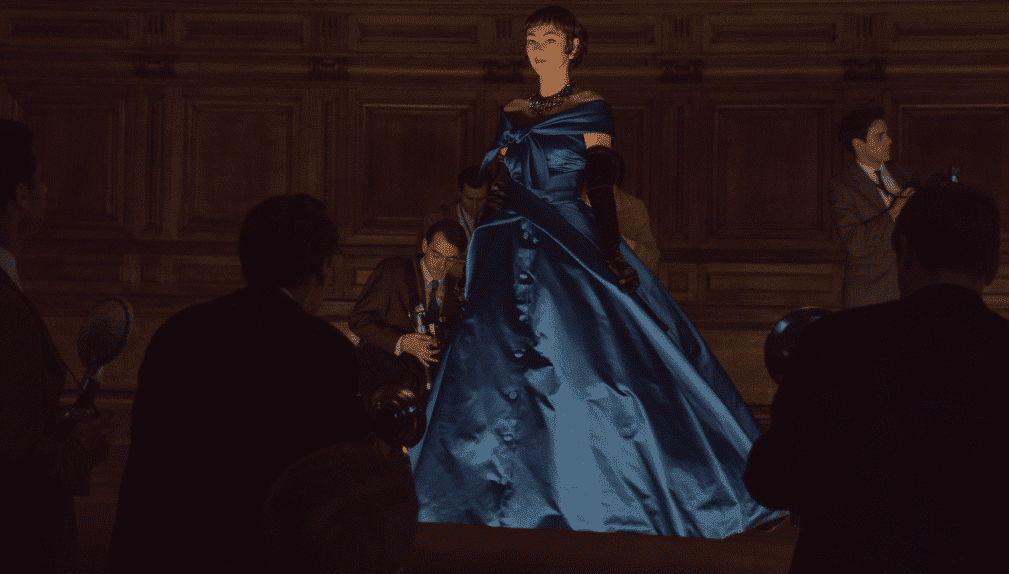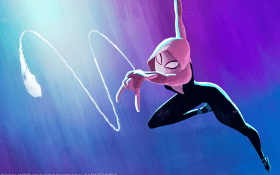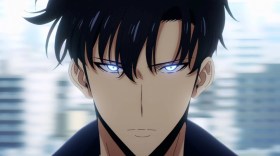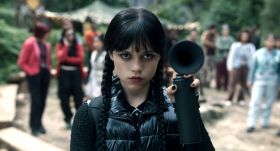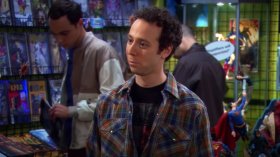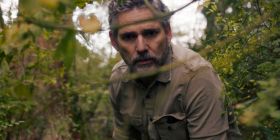Philosophers from Hegel to Taylor Swift have grappled with the idea of zeitgeist: that every era produces its own particular people and actions.
How else to explain twin films – two separately developed projects, released close together, that focus on the same topic? Or, indeed, twin streaming limited series, both about the same era in 20th-century Parisian fashion?
On 19 January, Disney+ released Cristóbal Balenciaga, a six-episode miniseries focused on Balenciaga’s 30 years in Paris from 1937–67. Told in a mix of Spanish, Catalan, French and English, it’s structured in flashback around a rare interview the famously reclusive Spanish couturier (Alberto San Juan) grants to fashion journalist Prudence Glynn (Gemma Whelan).
And this week, Apple TV+ releases the first three instalments of its ten-episode series The New Look. It explores how a landmark 1947 collection by Christian Dior (Ben Mendelsohn) helped restore France’s national spirit after WWII’s austerity and destruction, restitching a social fabric torn by Nazi occupation and French collaboration.
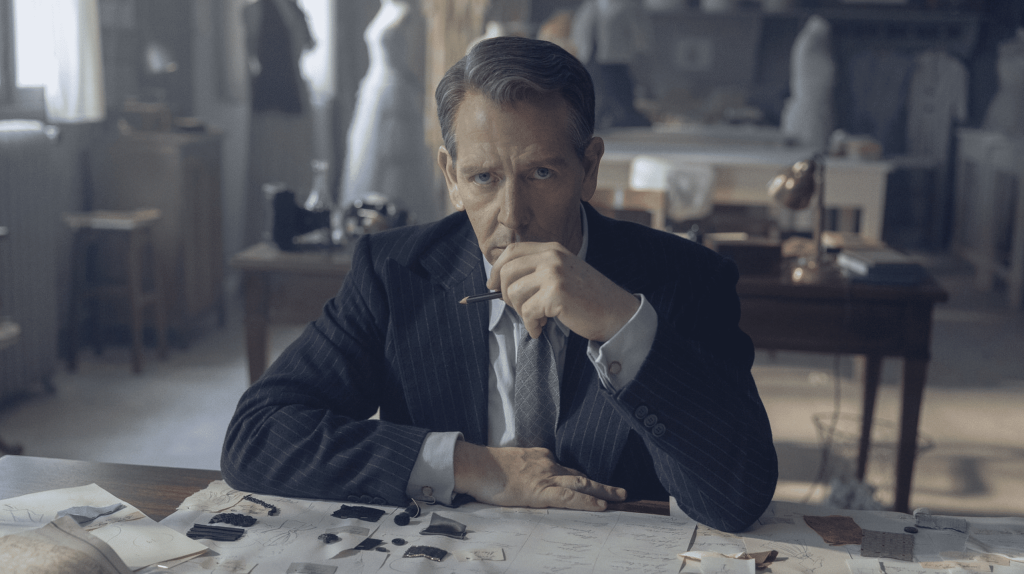
Of the two, Cristóbal Balenciaga is the more conventional: it focuses closely and chronologically on the creative struggles of one protagonist. By contrast, The New Look spends its first three episodes as a WWII espionage thriller. There are spy missions with mysterious suitcases full of money. Urgent phone calls and midnight rendez-vous. Gestapo raids, torture scenes, firing squads and concentration camps.
If you’ve been promised midcentury glamour, this might seem incongruous. But The New Look refuses to treat fashion as an aesthetic process by which individual creative geniuses shape history. Rather, it’s the other way around: couturiers are ambivalent figures shaped by their times.
That is, the zeitgeist – or, to use the French phrase after which Nina Ricci named her 1948 perfume, l’air du temps.
The truth behind the truth
The story kicks off in Paris, 1955, as legendary couturière Coco Chanel (Juliette Binoche) is holding a press conference to mark her return to her eponymous label at age 70, after almost a decade of exile in Switzerland.
She claims to be ‘totally, blissfully unaware’ that today at the Sorbonne, fashion students are honouring Christian Dior, whose fame has bloomed in her absence. But Chanel is definitely wrenching back the spotlight from the man she says ‘ruined French couture’.
Meanwhile, a nerve-wracked Dior is consulting his fortune-teller, Madame Delahaye (Darina Al Joundi). His right-hand woman Raymonde Zehnacker (Zabou Breitman) stalls for time by parading Dior’s greatest hits before a whooping Sorbonne crowd. Then the students have some tough questions about whether Dior designed ballgowns for Nazi WAGs.
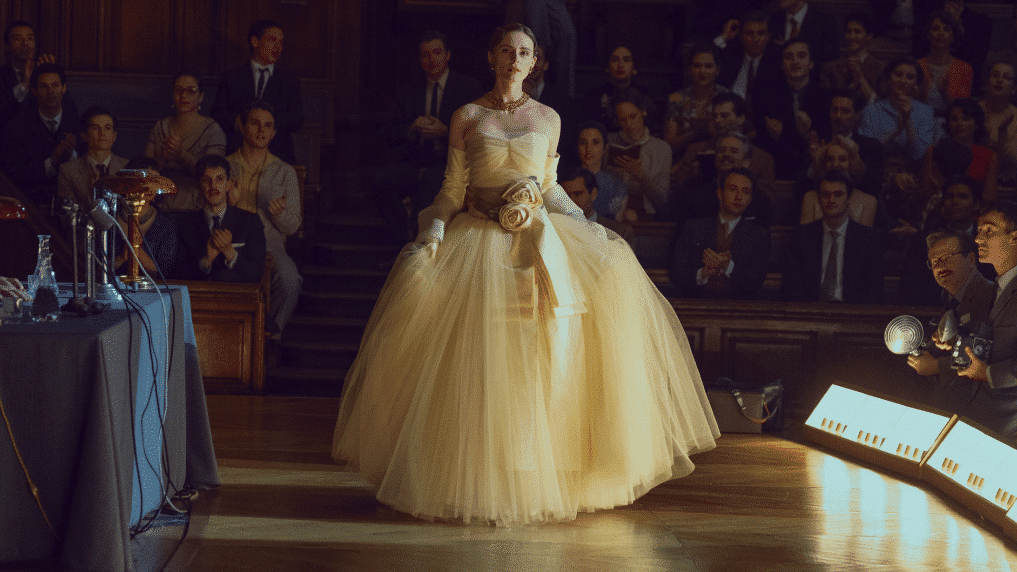
The New Look. Apple TV+.
Dior admits he did – not yet for his own label, but as a journeyman designer for Lucien Lelong (John Malkovich). But he reminds the audience that ‘there is the truth, but there is always another truth that lives behind it’.
Thus, The New Look creator Todd A Kessler (Damages, Bloodline) poses a veiled challenge to viewers who are used to consuming biopics as predigested narratives based on accepted facts. These characters are morally complex, although some are more straightforwardly heroic, such as Dior’s younger sister Catherine (Maisie Williams), a French Resistance operative.
It’s true that Chanel was an antisemite and homophobe who took Nazi spy Hans ‘Spatz’ von Dincklage (suavely played by Claes Bang) as her wartime lover, and asked the Nazis to wrest control of her perfume business from Jewish businessman Pierre Wertheimer (Charles Bering). The series neither defends nor condemns her; it rescues her from biopic clichés.
The angel of history
Writing in 1940, German cultural theorist Walter Benjamin imagined the Angel of History as a figure powerlessly propelled into the future while gazing back at the horrors of the past. ‘Where we perceive a chain of events, he sees one single catastrophe which keeps piling wreckage upon wreckage,’ Benjamin writes. ‘This storm is what we call progress.’
The New Look sets up Dior and Chanel not just as contrasting aestheticians, but as two views of 20th-century history. Chanel represents forward momentum; her trademark modernity sprang from her relentless desire to outrun her humble past. But Dior’s romantic, extravagant nostalgia, inspired by his wealthy mother’s Belle Époque fashions, is the face of the anguished angel: of loss and regret.
The series dwells in the irony that Dior should have been the one about whom Harper’s Bazaar editor Carmel Snow (Glenn Close) marvelled ‘This is such a new look!’ But it shows Dior as the face not just of France’s postwar joy, but also of its grief.
A show for this era
Shrewdly and sometimes damningly, The New Look illuminates our current fraught geopolitical climate, where creative people scramble to reconcile their ethics with their desire for security, while gatekeepers defensively perform ‘neutrality’ to retain their influence.
In one piquant irony, Dior tries to salve his conscience by refusing to personally fit his wartime clients – and so he misses a crucial warning from one client that the Nazis are close to arresting Catherine.
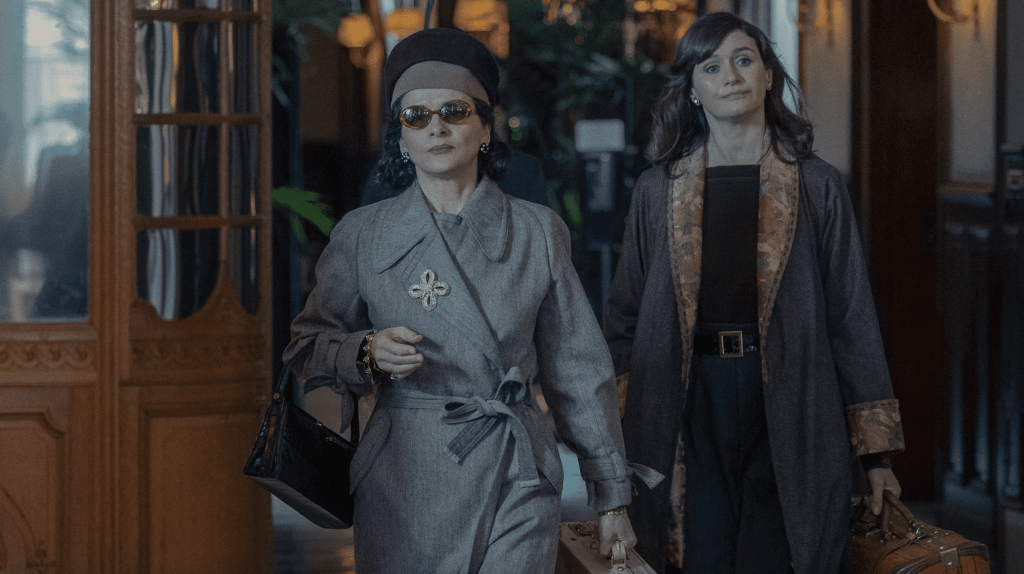
The New Look. Image: Apple TV+.
There’s also something quite contemporary about the show’s theme that cultural shifts signify less in themselves than what they reveal of soft power and backchannel negotiations.
As Dior frantically exploits his connections to rescue his sister – who survived SS torture, Ravensbruck concentration camp and Nazi death marches – Coco Chanel is equally motivated to rescue her adored nephew André Palasse (Joseph Olivennes) from a POW camp. The difference is that Chanel appealed to the Nazis.
Was she coerced into cooperating with SS intelligence officer Walter Schellenberg (Jannis Niewörner)? Was she a Resistance double agent, or the lovelorn dupe of Spatz, who groomed her as an asset alongside other potentially useful Frenchwomen? Was Operation Modelhut – in which she travelled to Madrid to meet with her old pal Winston Churchill – an unauthorised German backchannel offer to end the war?
Binoche’s sparky performance stages an entertaining intervention in the reputation rehab that marked Chanel’s entire career. It also invites us to consider Chanel as a vulnerable human, not just a ruthless pragmatist.
Mendelsohn – who worked with series creator Kessler on Bloodline – has a hangdog quality that suits this angst-ridden version of Dior. Conversely, Cristóbal Balenciaga depicts Dior (Patrice Thibaud, who also played Dior in the 2014 biopic Yves Saint Laurent) as an impish, publicity-courting foil for the media-shy Balenciaga.
It must also be said that Thibaud physically resembles the real Dior: a portly and mostly bald man who notoriously loved to eat, and looked more like Alfred Hitchcock than Ben Mendelsohn.
Maybe non-Australian viewers won’t have this problem, but I was faintly embarrassed by Mendo’s ’Allo ’Allo!-like French accent. As an actor, Mendo has a feral, anarchic energy that’s missing here, and made him seem miscast. Yet he throws himself into the role, and I just had to make peace with him as a creative decision.
Overall, I did enjoy this series’s moral and political complexity. But if you’re looking for respectful biopic ‘authenticity’, take a new look elsewhere.
The New Look is streaming now on Apple TV+.
Actors:
Ben Mendelsohn, Juliette Binoche, Maisie Williams, John Malcovich, Emily Mortimer
Director:
Todd A. Kessler
Format: TV Series
Country: USA
Release: 14 February 2024
